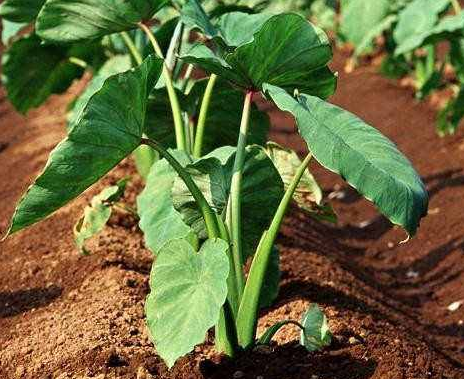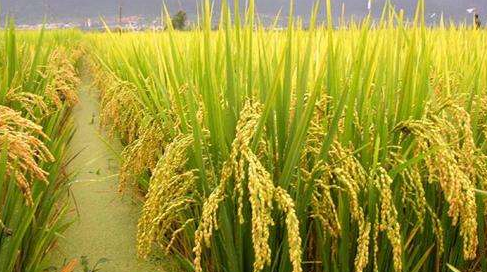In order to adjust the structure of the agricultural industry, increase the land utilization rate, and increase the multiple cropping index, the high-yield cultivation techniques for early maturing and rice rotation are introduced as follows:
First, early maturing cultivation techniques
1. Fine soil preparation, applying enough base fertilizer
Before the preparation of the ground, 1500-2000kg of decomposed organic fertilizer should be applied every 667 square meters, and 10kg of calcium, magnesium, phosphorus or urea, 40kg of superphosphate and 15kg of potassium chloride should be added as base fertilizer. After the field has been ploughed and sun-dried, it is stalked into a single ridge. In the preparation of the soil, depending on the nature and conditions of the soil, the soil can be modified by applying 50 to 70 kg 667 square meters of lime to improve the soil structure.
2. Planting in time, reasonable close planting
The suitable planting period for precocious pupa is from mid-November to mid-December. Cover the mulch after planting the seedlings. The density is 3,000 to 3,500 plants/667 square meters.
3. Careful management, membrane breakage
After planting the seedlings, the bottom water should be poured to ensure the emergence of seedlings. If the temperature is high, the water evaporates quickly, the soil is too dry, and there is no condensation on the bottom of the mulch during the day. Water should be watered once along the sulcus. After the spring, the buds were unearthed one after another. During this period, they should always go to the field to see that the unearthed seedlings should be immediately ruptured. The film rupture time should be before 10:00 am. The mulch film can be directly peeled off by hand, and the seedlings can be pulled out, and then the soil is sealed with fine soil to prevent water loss and reduce soil temperature.
4. Scientific irrigation, reasonable topdressing
Precocious 芋 芋 温 温 温 温 温 温 温 温 温 温 温 温 温 温 温 温 温 温 温 温 温 温 温 温 温 温 温 温 温 温 温 温 温 温 温 温 温 温 温 温 温 温 温 温 温 温 温 温 温 温 温 温 温 温 温 温 温 温 温 温 温 温 温 温 温 温 温 温 温 温 温 温 温 温 温 温 温 温 温 温 温 温 温 温 温 温 温 温 温 温 温When it grows to 4 to 5 leaves, it begins to enter a vigorous growth stage. The leaf area increases rapidly and requires more water. In this period, the water should be properly controlled to prevent excessive growth of the aboveground part. After the 7-leaf period, sufficient water should be supplied to increase the yield and quality of the early-maturing cockroaches.

Early maturity requires a large amount of fertilizer, in addition to the application of base fertilizer, it is generally necessary to topdress 3 times. For the first time, the seedling fertilizer is applied. After the leaves are spread, 10 to 15 kg of urea is applied per 667 square meters, and 15 to 20 kg of superphosphate is mixed. After mixing, the water is applied to promote root growth. The second top dressing is in the 3 to 4 leaf stage. Combined with 10kg of urea per 667 square meters of soil and 15kg of ternary compound fertilizer, it provides sufficient nutrients for the rapid growth of early maturity. The third top dressing is carried out in the 7-leaf stage, combined with the cultivating soil (using the soil in the ditch) to re-apply, 25kg of ternary compound fertilizer per 667 square meters, 10kg of potassium chloride, this period is the early maturing period At the peak of the expansion of the child, topdressing is the key to improving production and quality.
5. Prevention of diseases, pest control
The diseases of precocious pupa mainly include bud spoilage and plague, and the disease should be based on prevention. In the onset of disease, it can be treated with 65% wettable zinc, 500-600 times, or 70% methyl thiophanate 500 times spray; the main pests are aphids, twill moths, crickets, red spiders, etc. Fruit emulsion 500 ~ 1000 times liquid, 80% dichlorvos 1000 ~ 1500 times liquid or 50% phoxim 2000 times liquid spray.
6. Pay attention to the market and collect it in time.
Precocious pupa is generally harvested from June to July. At that time, it was the off-season of vegetable supply. It should be harvested in time according to market conditions.
Second, late rice cultivation techniques
1. Sowing and cultivating at the right time
The high-quality and high-yield hybrid rice combination II You 084 with a growth period of about 130 days is generally planted in mid-June, the age of the seedlings is not more than 30 days, the seeding rate is not more than 15kg/667 square meters, and the seeding is carried out by means of moist breeding to achieve uniform distribution and dilution. Spraying 300mg/L paclobutrazol to promote tillering in one heart and one leaf stage; applying "broken milk fertilizer" in two leaves and one heart stage, spraying 1% solution with 50g compound fertilizer per square meter of polder, and applying the same concentration for 3d before transplanting "Give marrying fertilizer" and timely control pests and diseases in Putian.
2. Reasonable close planting, inserting basic seedlings
The size of the transplanting rice is 20cm×23cm, and two grain strips are inserted in each cluster, and 8 to 100,000 basic seedlings are inserted every 667 square meters.

3. Scientific fertilization, reasonable irrigation
In fertilization, apply sufficient base fertilizer, apply 80kg of rice special fertilizer per 667 square meters, or 25kg of basic fertilizer of ammonium hydrogen phosphate and superphosphate. After 7 days of transplanting, apply fertilizer, apply 15kg of urea per 667 square meters, 10kg of potassium chloride. Mix 20.0 kg of butachlor to weed. The second top dressing was carried out 15 days after transplanting, 5-10 kg of urea per 667 square meters, and 5 kg of potassium chloride. In the middle and late stages, rice fields should be fertilized as appropriate. The total fertilization amount is 12 kg of pure nitrogen and the ratio of nitrogen, phosphorus and potassium is 1:0.5:0.7. When the number of stems reaches 70%-80% of the predetermined number of seedlings, the field can be baked, the ineffective tillering is strictly controlled, and the rate of ear formation is improved; the dry and wet alternates are prevented in the later stage to prevent premature water loss and increase the seed setting rate.
4. Strictly prevent pests and diseases, harvest at the right time
The main pests are rice planthopper, stem borer, stem borer, and rice leaf roller. The main diseases are rice false smut, rice blast and sheath blight. According to the forecast of the local plant protection department, timely control of pests and diseases should be done to ensure high yield and good harvest.
We are a professional Chinese supplier of Natural Antioxidants; we supply various products of Plant Antioxidants; and we can providing product images and basic parameters with each Natural Oxidants and Anti-Free Radical Ingredients, such as Astaxanthin Powder, OPC 95%, Turmeric Root Extract, Lycopene Powder, Beta-carotene Powder, etc. Look forward to your cooperation!
Astaxanthin Powder,OPC 95%,Turmeric Root Extract,Lycopene Powder,Beta-carotene Powder
Xi'an Quanao Biotech Co., Ltd. , https://www.quanaobio.com